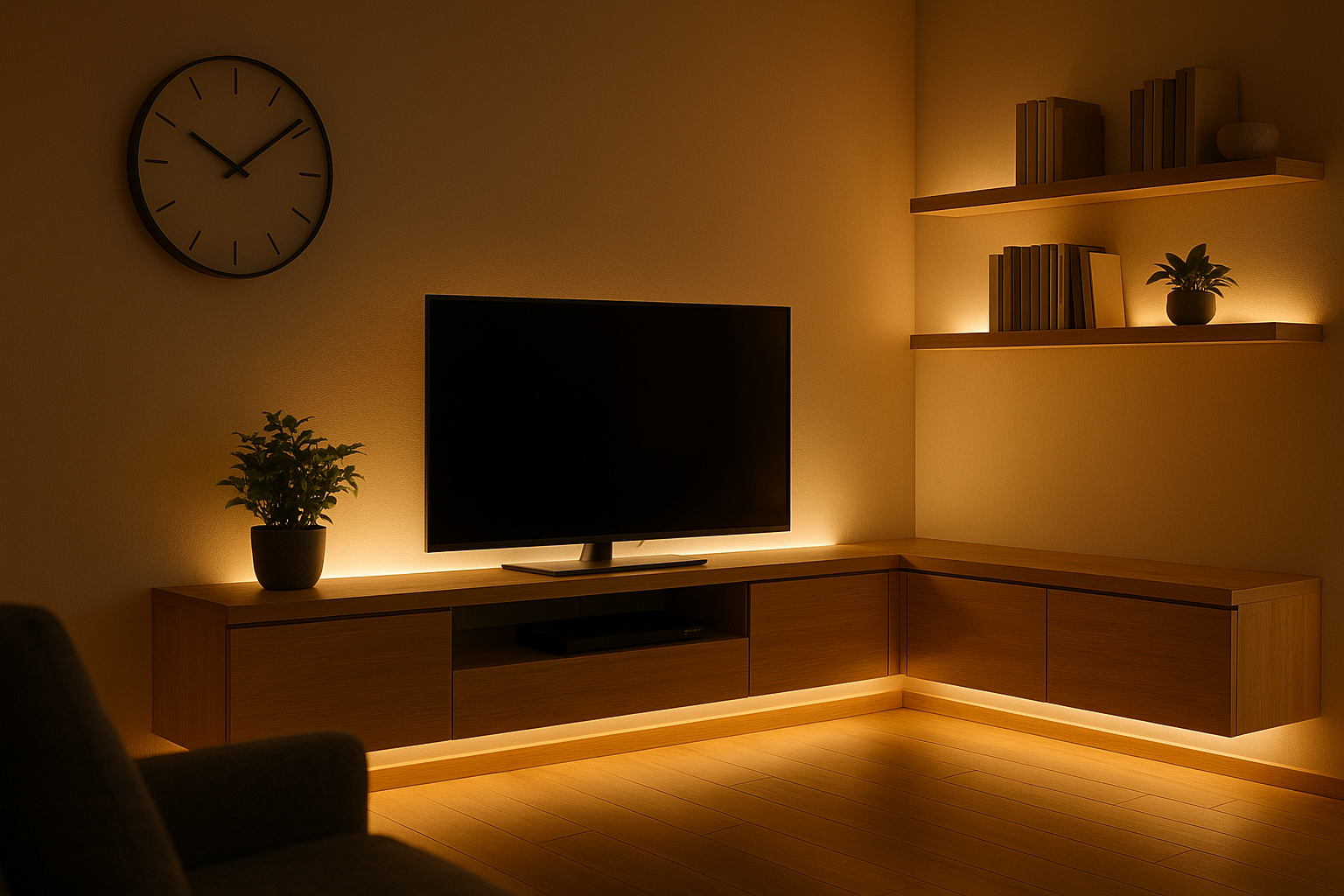- What Are LED Strip Lights?
- Average Lifespan of LED Strip Lights
- Factors That Affect How Long LED Strip Lights Last
- How to Maximize the Lifespan of LED Strip Lights
- Signs Your LED Strip Lights Are Failing
- Comparing LED Strip Lights to Other Lighting Options
- Choosing Quality LED Strip Lights for Longevity
- Conclusion
LED strip lights have revolutionized residential, commercial, and creative lighting solutions. From accentuating kitchen cabinets to backlighting TVs and illuminating retail displays, these versatile lights are everywhere. But a common question persists: how long do LED strip lights last?
Understanding their lifespan is crucial for homeowners, designers, and contractors alike. In this comprehensive guide, we’ll explore the average longevity of LED strips, what affects their performance, and how to ensure you get the most out of your lighting investment.
What Are LED Strip Lights?
LED strip lights are flexible circuit boards populated with surface-mounted light-emitting diodes (SMD LEDs). They’re typically backed with adhesive, making them easy to install on various surfaces. Their slim profile and customizability have made them a popular choice for ambient, task, and decorative lighting.
Available in multiple color temperatures and RGB configurations, LED strip lights are used in:
- Home lighting
- Commercial signage
- Automotive lighting
- Event decoration
- Smart home integrations
Average Lifespan of LED Strip Lights
So, how long do LED strip lights last under typical usage? On average, high-quality LED strip lights last between 25,000 to 50,000 hours.
To put this into perspective:
- 25,000 hours equates to over 8 years if used 8 hours per day.
- 50,000 hours translates to roughly 17 years under the same usage.
| LED Strip Quality | Estimated Lifespan (Hours) | Estimated Years (8hrs/day) |
|---|---|---|
| Low-end (budget) | 10,000 – 20,000 | 3 – 7 years |
| Mid-range | 25,000 – 35,000 | 8 – 12 years |
| High-end (premium) | 50,000+ | 15+ years |
Factors That Affect How Long LED Strip Lights Last
Several factors can significantly impact their longevity:
1. Heat Management
LEDs emit less heat than incandescent bulbs, but they still generate some. Excess heat shortens lifespan. Proper heat dissipation via aluminum channels or placement on heat-conductive surfaces helps maintain performance.
2. Power Supply Quality
Using the correct voltage and a high-quality power supply prevents current fluctuations and overheating, which can degrade the LED’s components over time.
3. Usage Duration
The more hours the strip is on continuously, the quicker its rated hours are consumed. Overdriving the LEDs by using higher voltage than recommended will also shorten the lifespan.
4. Environmental Conditions
Humidity, exposure to dust, and outdoor placement (without waterproofing) can all reduce durability. Look for IP-rated LED strips for challenging environments.
5. Product Quality
High-quality LEDs with better binning (uniform brightness and color) and superior components typically last longer than cheaper, mass-produced alternatives.
How to Maximize the Lifespan of LED Strip Lights
Investing in LED strips is just the first step. Extending their life requires some smart practices:
✅ Use Aluminum Mounting Channels
These not only improve aesthetics but also act as heatsinks, dissipating heat efficiently.
✅ Choose the Right Power Supply
Select a transformer with at least 20–30% higher wattage than your total LED load to prevent overheating and strain.
✅ Avoid Continuous 24/7 Use
If the application allows, turn off the LEDs when not needed. Use timers or smart plugs to automate usage and reduce operating hours.
✅ Ensure Proper Ventilation
Enclosed or poorly ventilated installations trap heat. Design for airflow, especially for high-output LED strips.
✅ Clean Periodically
Dust and debris can trap heat and dull light output. Gently wipe down strips with a dry or lightly damp cloth.
Signs Your LED Strip Lights Are Failing
Even high-quality LED strips will eventually show signs of aging. Here's what to watch for:
-
Dimming or Flickering: Indicates voltage inconsistencies or degrading diodes.
-
Color Shifts: Older LEDs may begin to emit different hues (especially in RGB strips).
-
Sections Going Out: Often due to solder joint failures or burnt-out components.
-
Unusual Heat: Excessive warmth could signal an overburdened power supply or poor ventilation.
If you're noticing these issues, it's a cue to troubleshoot or consider replacement.
Comparing LED Strip Lights to Other Lighting Options
| Light Type | Average Lifespan | Energy Efficiency | Maintenance |
|---|---|---|---|
| LED Strip Lights | 25,000 – 50,000 hrs | High | Low |
| Incandescent Bulbs | 1,000 – 2,000 hrs | Low | High |
| Fluorescent Tubes | 7,000 – 15,000 hrs | Medium | Medium |
| Halogen Bulbs | 2,000 – 4,000 hrs | Low | Medium |
Choosing Quality LED Strip Lights for Longevity
To avoid disappointment and early replacements, make sure to select products that meet the following criteria:
✅ Verified Brand Reputation
Stick with reputable manufacturers or vendors with strong reviews and clear specifications.
✅ Warranty Period
Look for products that offer at least a 2- to 5-year warranty. This signals confidence in longevity.
✅ Certifications
UL-listed or CE-certified products adhere to safety and performance standards.
✅ High Lumen Efficiency
Choose strips with at least 80–100 lumens per watt for optimal performance.
✅ IP Rating (if applicable)
For outdoor or damp environments, opt for IP65 or higher to ensure water and dust resistance.
Conclusion
So, how long do LED strip lights last? The answer depends on several variables, but with quality products and proper care, you can expect 8 to 15+ years of reliable performance.
LED strip lights are not only energy-efficient and stylish but also a long-term lighting investment. By choosing wisely and maintaining them properly, you’ll save money, reduce waste, and enjoy consistent illumination for years to come.

